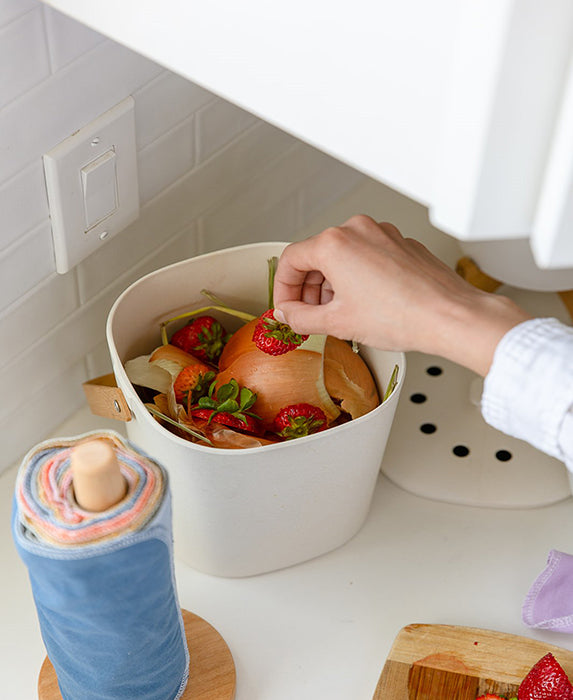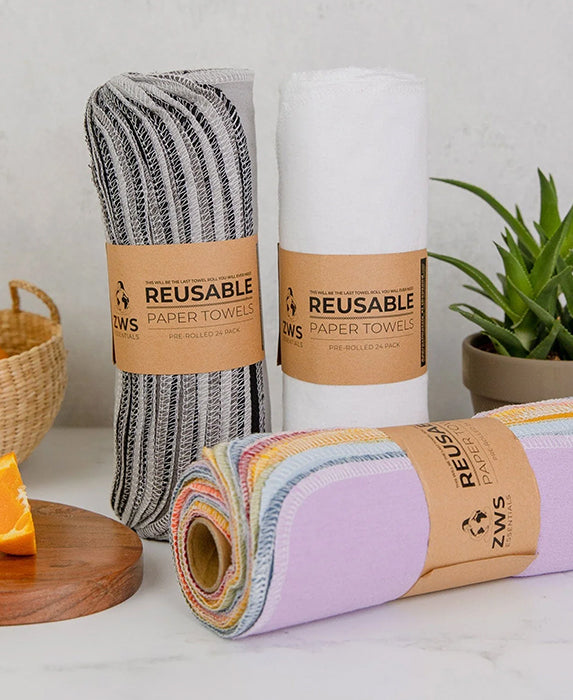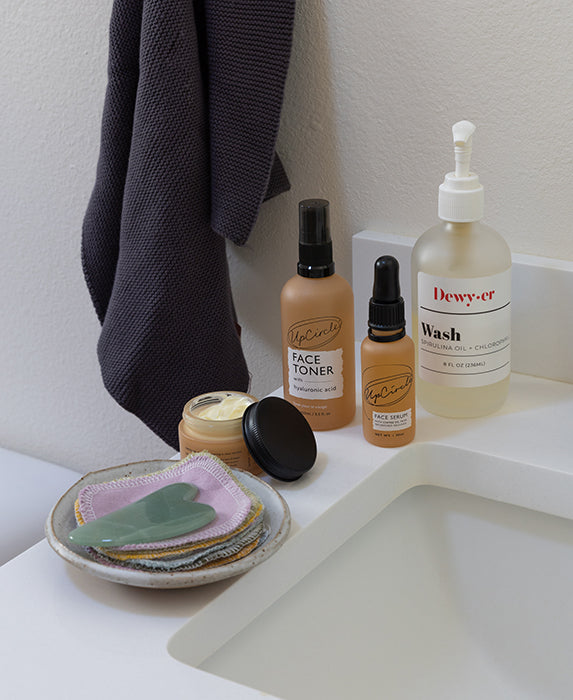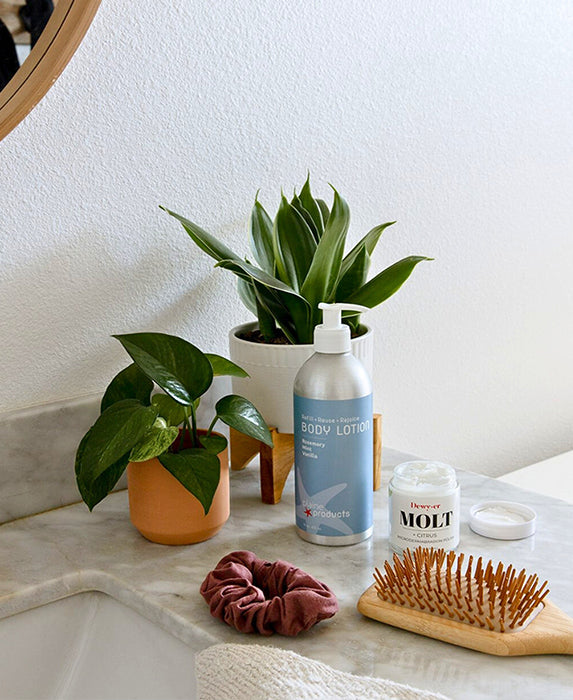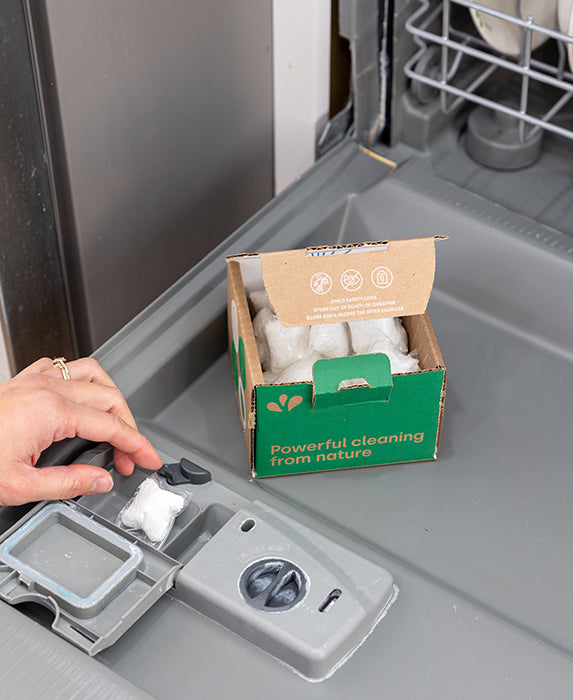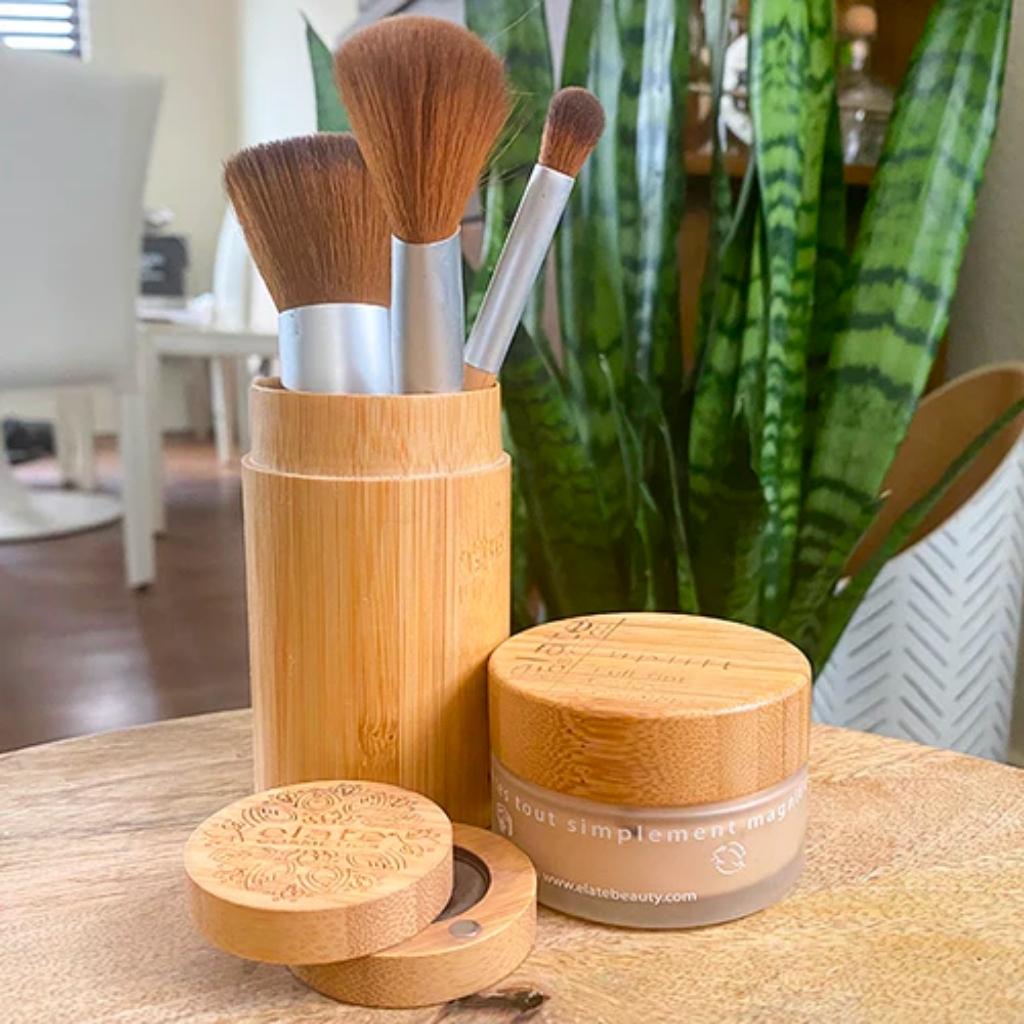If you’ve been exploring the world of sustainable fabrics and clothing, you likely have seen the word TENCEL™ before. But what is TENCEL™, and is it actually sustainable? While it has a growing reputation for being strong and low impact, TENCEL™ is still a mysterious fabric to many.
Join us as we dive into TENCEL™ and show you why we love it here at EarthHero!
What is TENCEL™?

You may have noticed the capitalization and trademark symbol we use with TENCEL™. That’s because it’s is the brand name of Austrian-based Lenzing AG’s lyocell fabric. While there are plenty of other wood-based fibers out there, they all have different sustainability and production standards. As such, our focus in this post is going to be Lenzing AG’s TENCEL™ lyocell.
Fun fact: Modal, like TENCEL™ lyocell, was created by Lenzing AG as an inexpensive alternative to silk. However, TENCEL™ was made as a stronger alternative to modal and rayon. While TENCEL™ can refer to either TENCEL™ lyocell or TENCEL™ modal, it typically refers to TENCEL™ lyocell.
Sourcing and Production
TENCEL™ is a type of rayon, or “regenerative cellulose” fiber much like modal. The wood itself is dissolved in a closed drum using amine oxide which decomposes the wood into fibers without water. Following, the fibers are spun and used for a breathable, soft, and sustainable fabric!
These wood fibers are extremely versatile and are used to increase the final fabric’s functionality. That’s why you often see them in a range of clothing and home essentials like activewear and sleek comforters. Physically, TENCEL™ fabric is 50% more absorbent than conventional cotton. This makes dyes last longer and increases the fabric’s breathability.
Moreover, one noteworthy aspect of TENCEL™ production is its closed-loop system. We’ll dive deeper in the following section where we compare TENCEL™ to other wood-based fibers. Hint: TENCEL™’s closed-loop system is not an industry standard.
Sustainability Certifications

TENCEL™ has a goal of reaching True Carbon Zero status by 2050. This means that TENCEL™ (both lyocell and modal) is currently CarbonNeutral® certified but through carbon credit purchasing. Instead, TENCEL™ wants to reach True Carbon Zero through no carbon emissions. As such, they’re continuously lowering their footprint through efficient production, renewable energy sources, and sustainable technology.
TENCEL™ also received the United States Department of Agriculture (USDA) BioPreferred® designation. This indicates that lyocell is made with a majority of renewable biological ingredients. Learn more about biobased content here. Moreover, in Europe, Lenzing AG’s TENCEL™ earned the European Award for the Environment in the category of “The Technology Award for Sustainable Development”. Presented by the European Commission in 2000, the award recognized the high resource efficiency and low ecological impact of TENCEL™’s lyocell production process.
Environmental Impact
One benefit of TENCEL™ production is that it uses 50% less water, and up to 50% less energy to make than conventional cotton. Even the solvent used to process the fabric is less harmful to the environment and workers. On the other hand, conventional viscose and rayon production use carbon disulfide. Unlike TENCEL™ solvent, carbon disulfide has known negative health and ecological consequences.
Plus, because TENCEL™ is plant-based, it’s easily biodegradable at the end of the fabric’s life. However, this becomes more difficult to do if the product is mixed with synthetic fibers like nylon or dyed with colorants. Of course, we recommend gifting or upcycling your TENCEL™ goods before resorting to composting.
Beyond their rigorous sustainability standards and certifications, TENCEL™ focuses on environmental stewardship and operations oversight. These two factors that set them apart from other wood-based fabrics.
How is TENCEL™ different from Modal and Lyocell?
TENCEL™, modal, and lyocell are all rayon substrates or fabrics made with wood-based fibers. Moreover, while modal is made from beechwood, both TENCEL™ and other lyocell fabrics are made from eucalyptus. Overall, TENCEL™ differs from other lyocell and modal fabrics in two ways: its commitment to sustainable forestry and closed-loop system.
Sustainable Forests

TENCEL™ wood materials are sourced from FSC-certified eucalyptus trees. This means the wood is carefully selected from forests that meet high social, environmental, and economic standards as certified by the Forest Stewardship Council (FSC). Eucalyptus trees are ideal because they are highly regenerative, require little water, and don’t need pesticides.
“Up to 30% of rayon and viscose source their wood pulp from endangered forests.”
“Deforestation For Fashion: Getting Unsustainable Fabrics Out of The Closet“. The Guardian. 2014
Closed-Loop System
Lenzing AG’s TENCEL™, which holds 90% of lyocell fiber market share, gained an incredible reputation for its closed-loop process. This refers to the reuse of chemicals and solvents to minimize waste and ecological harm.
Unlike other wood-based fabric solvents, TENCEL™ solvent is an N-Methylmorpholine N-oxide (NMMO) solution that is easily recoverable. In fact, Lenzing AG’s solvent recovery rate is 99.6%, leading to an endless cycle of use and reuse. And if you’re worried, the remaining <1% is itself biodegradable and not harmful to the environment.
TENCEL™ Products
Ethical brands around the globe have found innovative ways to integrate TENCEL™ into their products. The fabric’s inherent sustainability and unique production process are only two reasons why. Here are some of our favorites on EarthHero.
Staple Pieces

tentree on EarthHero
One company that loves utilizing TENCEL™ is the Canadian-based and B Corp company, tentree! This classic t-shirt is perfect for everyday wear. What better addition to your wardrobe than a soft and breathable top that goes well with any outfit?
We love tentree not only because of their high-quality clothing but because they give back. They plant 10 trees for every purchase, — hence their name. To date, they’ve planted over 61 million trees, and their goal for 2030 is to plant 1 billion trees!
As an environmental steward and leading sustainable clothing company, tentree knows how important materials are. As a fabric that is low water and waste-producing, TENCEL™ is the perfect alternative. Plus, tentree also uses organic cotton and recycled polyester!
“An estimated 8,000 synthetic chemicals are used to turn raw materials into textiles, which contributes up to 20% of the world’s water pollution”
“How Can We Stop Water From Becoming A Fashion Victim?“, The Guardian, 2012

Another staple piece is a stylish pair of denim jeans. The denim industry is known for its negative ecological footprint. Porter Blue Apparel knows this and makes their jeans the greener way. They come in a variety of styles and incorporate elastane for a stretchier fit. Plus, they employ a waterless washing technique that uses 65% less energy, 75% less water, and 85% fewer chemicals than typical denim!
Outerwear

This gorgeous Ivy Cardigan from tentree is perfect over a t-shirt and jeans for going out to town. Perfect for chillier nights, it layers well without weighing you down. Plus, it’s blended with TENCEL™ and organic cotton so you know it’s incredibly soft and will keep you cozy all day and night!
Accessories

Another favorite of ours is CLOVO! CLOVO makes all of its tights from TENCEL™ and modal fibers. Plus, they contain 71% less plastic than conventional tights. They also partner with Cool Effect to work towards becoming carbon neutral. Thanks to the TENCEL™ fibers, their tights are breathable, lightweight, and durable. In fact, these tights last 5 times longer than conventional tights!

One of our newest additions is the Weekender Denim Tote Bag from Porter Blue Apparel. This tote bag is a beautiful blend of TENCEL™ and organic cotton, and it’s manufactured ethically in Sri Lanka. This buttery feel is made to last and you can be sure it was made with the planet in mind.
Style this bag with your favorite jeans and t-shirt for a farmer’s market outings or with a simple dress and tights for afternoon errands.
Brand Highlight: Intimates from Underprotection

One brand we love is Underprotection. Not only are they a B Corp, but their products are certified vegan by PETA. They have a selection of gorgeous intimates made with >94% TENCEL™ fabric. And don’t worry, the remaining materials are largely recycled nylon and elastane!
Pro tip: Consider hand washing your gorgeous intimates to extend their life and minimize pilling.
Not only is TENCEL™ sustainable for the planet, but it is a durable, breathable, lightweight, and overall wonderful addition to any wardrobe. If you’d like to learn more about this incredible fabric, check out the TENCEL™ homepage. What do you think? Let us know in the comments below!

